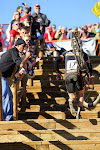
Just out here being me.
1 day ago
A place to come and hide away from life's daily bore, a place to smile and laugh....maybe even cry, a place to reflect on what's really important in life, where you go and who you go with....it's not about the pile of money you get to take with you to the grave folks.....your bank accounts should be a wealth of great experience and good friends. I am indeed a wealthy man. All attempts at humor on the site are just that, attempts. Most is untrue, all is purely entertainment. Larry G


